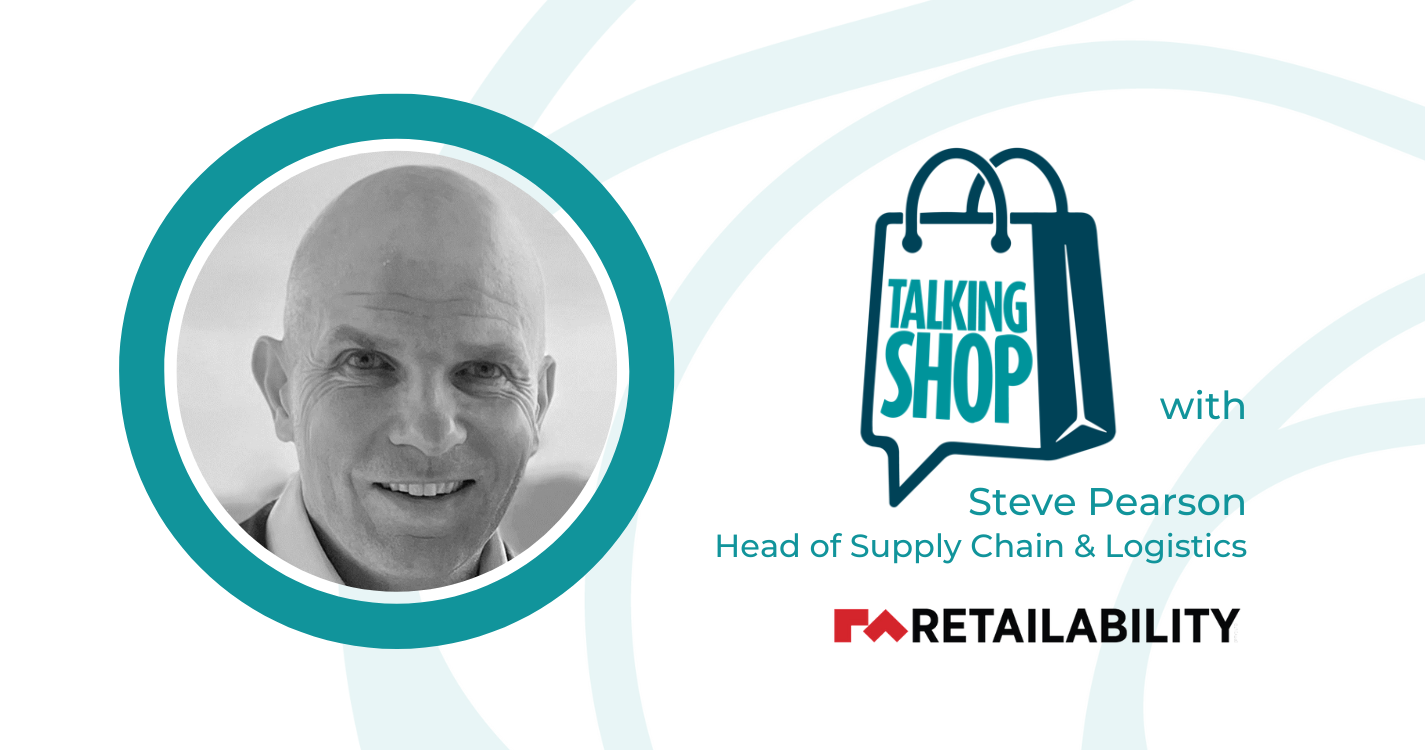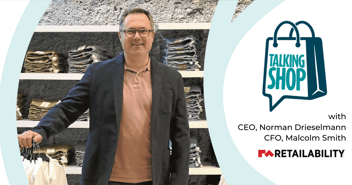Talking Shop: Retailability's Head of Supply Chain & Logistics shares their incredible story of resilience
A view from our client, Retailability, about how resilience in the face of adversity helped them realign their supply chain strategy for greater efficiency
Adrian Smith, Consultant and Product Lead for the Advanced Warehouse Management System (AWMS) product line at Retail Directions, recently sat down with Steve Pearson, Head of Supply Chain and Logistics at Retailability, the 600-store South African-based fashion retailer, to talk about supply chain management and discuss all things warehousing, logistics, and merchandising.
Adrian: Steve, thank you both for taking the time to share your thoughts on supply chain management. Would you mind giving some background to Retailability and your role within the company?
Steve: Retailability is a South African-based apparel retailer. I joined the company in 2016, just prior to the acquisition of LEGiT from the Edcon group.
Since then, we’ve acquired Edgars in 2020, which is a significant business. So, within our brand portfolio, we have Edgars for the higher-end consumer plus LEGiT and Beaver Canoe for the middle-end consumer.
Below that, we have the Style chain that targets the entry-level fashion aspirant consumer. So, we hit the market at different levels, but have the same supply chain right across and the same retail philosophy.
Adrian: Could you take us through your and Retailability’s philosophy around the supply chain and how it morphed over the time that you’ve been with the business?
Steve: When I joined Retailability, a lot of the philosophy around the supply chain was determined by physical space. We had a tiny warehouse. The philosophy was really about being fast and furious!
You had to get stock in and out within the same day because there was no facility for holdback. At some point, we managed to get a consolidation function within that space, but no holdback.
So, we’ve grown up with that scarce mentality around space and we’ve continued to run a supply chain that focuses quite heavily on flowthrough, and one that’s mindful of eroding value. So, value for us sits in ‘time taken’.
Fashion merchandise needs to get to the stores as quickly as possible. Value also sits in touchpoints and structure – you can build very large and complex supply chains, but unless it enhances the value of the products, it’s not necessary.
Adrian: You’ve discussed efficiencies, values, and touchpoints. What is the importance within Retailability of the value that the supply chain and the logistics add into the business?
Steve: In a retail business, everything is merchandise centric. With customers coming for the merchandise, the supply chain plays the role of enabler.
Your merchandise team needs to place orders and have confidence that they will be delivered, received, checked, quality assured, dispatched to stores and received within the shortest possible time.
The supply chain should not really be visible, they should just be able to place orders and the stock should arrive within a few days.
That for us is what success looks like.
Adrian: In 2020, Retailability acquired Edgars, which must have been a massive change for your supply chain to be able to service that business. Could you talk us through that?
Steve: I don't think it's so much a change for Retailability’s supply chain as it was a change for the Edgar suppliers. Historically, Edgars had done less flowthrough and a lot of merchandise was delivered in solids and fine picked to stores.
But the solid delivery, fine pick model is much more labour intensive and slow, and we saw that in their numbers.
The transition to a Retailability flow preference model took a lot of discussions with those suppliers. They had to wrap their heads around what we were trying to do because when they were delivering the carton that we were going to use to dispatch, many of them didn’t really worry about a box that was half full.
Yet, we were paying per cube, so we went on a campaign to educate them, but it wasn't successful. Eventually, we resorted to just turning them away, saying we won’t accept this order because it was costing us too much. After initial dissatisfaction, they all came right.
Adrian: But things didn’t exactly go that easy, there were a few hiccups along the way after you acquired Edgars. Could you tell us about that?
Steve: When I think back to the riots of July 2021… we were so excited during the first week of July because we were getting our volumizer commissioned, and it was the last piece of tech to go into our new warehouse. The volumizer probably cost more than our previous warehouse. So, we were very proud of it, and we stood around and looked at it doing its thing.
And the next week it was gone!
We were really unfortunate with the riots, because we were in a shared facility with UPL, and many people were aware of the disaster around that time. Looters, unfortunately, got into UPL and set all those explosive chemicals alight. So, we lost our facility and our volumiser that hadoonly really done two days’ work.
Adrian: That must have really changed the way your business and your people think about resilience and flexibility. Do you want to talk us through that?
Steve: We had to make a plan. We went looking for a facility and we found one. It was not ideal, but we quickly signed a lease and said we need to make this work. The can-do attitude of our people and partners was absolutely critical in taking the next steps as we worked through the challenges we faced.
Adrian: We have spoken about your supply chain philosophy earlier on and looking into the future. What are the priorities to maintain and take that philosophy forward?
Steve: In a supply chain, all automation and development is expensive. Our philosophy is that we recognise where we are on the maturity curve. We don’t have all the complexities in place.
So, it is important to get the big things right first and build your strategy around that.
We have the cornerstones of automation in place, and we are trying to make sure that we are using them efficiently, as we want to tick the box completely and then move on to the next thing. Otherwise, things can be a bit blurred when you go for the next shiny bit of tech, but you still don’t get the full value out of the first one.
Adrian: If we look at tracking all the metrics within the warehouse, how important is it to have data that are unified in that space?
Steve: I personally am very fond of data. And a key thing in a warehouse is just - measure, measure, measure!
We would like to measure everything, and from a few different angles. Measurement should always take priority over any investment. You have to measure and have a view of what you want to achieve, and then you can really see if you’re getting value.
Adrian: We’ve spoken about measuring productivity and measuring throughput and automation of the environment. Can you provide an example of where the two have come together to yield efficiency gains?
Steve: Our scan-receiving project with Retail Directions is a great example of where those two have come together.
We used to receive orders by batch, bring it in, palletise, and receive, relabel and dispatch. However, this project enabled us to receive orders at a carton level, which worked hand-in-hand with our cross-stock automation.
That created efficiency and we could throw in some measurements. So, during the cross-stock, we can get some metrics off the box, such as time metrics, which helps us to enhance the service.
We haven't interrupted the cross-dock process, but we are throwing all that data into periodic reporting and seeing what the weight variances between boxes are. Do we think there are shortages from certain suppliers? Is there something we need to investigate?
Adrian: I suppose the next question that’s always on people’s minds is what’s next for Retailability when it comes to their supply chain strategy?
Steve: In the world of the supply chain, there are a lot of exciting things happening. It’s a great time to be in the supply chain. And I think from a system perspective, we are seeing lots of development.
What does it mean for us? Well, I think between Retailability and Retail Directions we have some key projects that are going to make a significant difference in how we get to market. If I look at other retailers and the kind of investments they’ve made, I think we will come up to those investment hurdles and ask some serious questions.
I also think we’re going to take a different stance from what some of our peers have and I think that will really be informed by the riots of July 2021.
We are going to invest less in automating one facility and invest more in being flexible and able to use third-party facilities. We also recognise that fuel energy is going to become a scarce commodity.
We’ll have to work backwards from those things being key drivers, manage the risk, reduce our fuel bill, and not be too fixated on the toys that are in the box.
Adrian: Thanks so much Steve for sharing the story of Retailability. It’s certainly been an interesting journey. What would your key takeouts be that you’d like to share from this discussion?
Steve: I don’t think that running a successful supply chain has to be an expensive exercise. There’s a lot of room for innovation and agility without having all the fancy software and equipment. So, my encouragement to our peers would be to really invest in the people and the culture – I think that that will often pay more dividends than the hardware and software!
ENDS
Read Retailability's Success Story here, and listen to Steve's podcast here.
About Retailability https://www.retailability.co.za/
Founded in 1984, Retailability is a South African-based group of retail brands including Edgars, Legit, Beaver Canoe, and Style. With over 600 stores across Southern Africa including South Africa, Namibia, Botswana, Lesotho, and Swaziland – Retailability prides itself in bringing authentic and affordable fashion to its customers.
-------------------------------
Find out more about managing efficient and connected warehouse operations at the lowest cost with our Advanced Warehouse & Logistics Management products and services. Download our product overview or request a demo.






